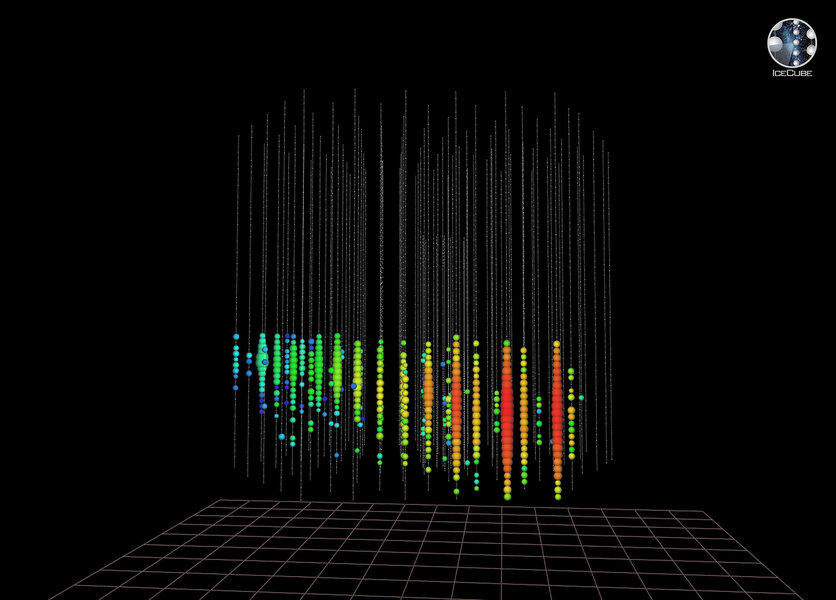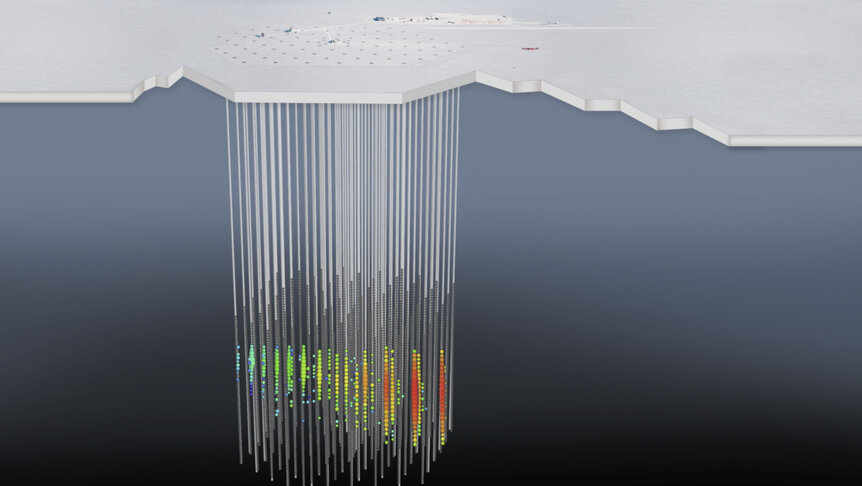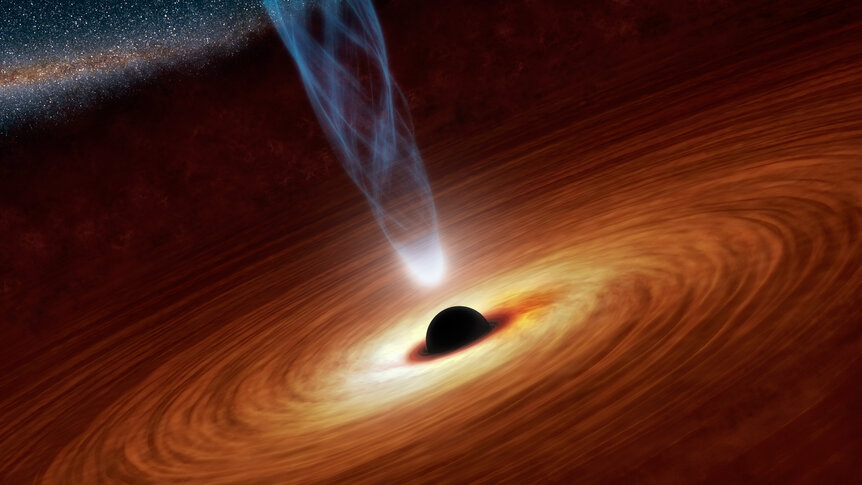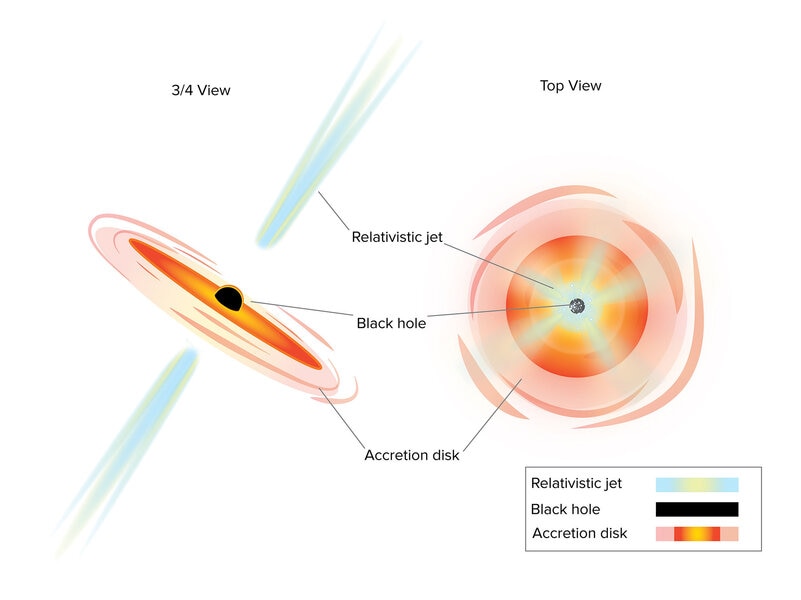Create a free profile to get unlimited access to exclusive videos, sweepstakes, and more!
News: Monster black holes shoot out neutrinos like cosmic bullets
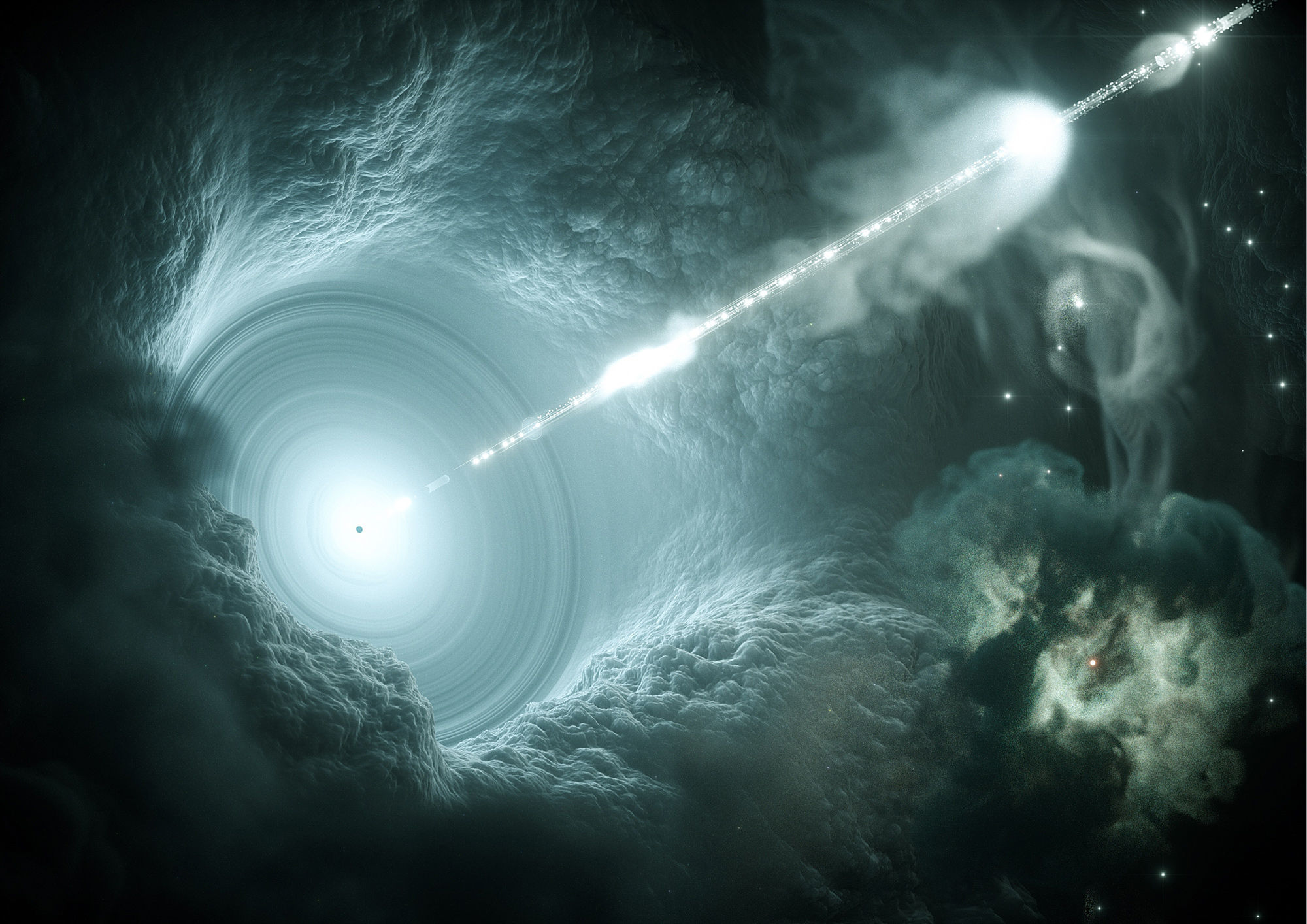
An observation of a single subatomic particle in 2017 triggered a massive observation campaign across — and above — the Earth, and the results may finally answer a question that's plagued astronomers for years: What is the source of super high-energy cosmic neutrinos?
Neutrinos are ghostly subatomic particles created in nuclear reactions. They're weird. Maybe it's better to say they're standoffish: They don't interact well with matter and light. If you shoot a proton or an electron into something solid, it won't get very far before getting absorbed or scattered or otherwise affected. But a neutrino scoffs at such barriers. It can travel through our entire planet as if it didn't exist at all.
Well, most neutrinos can do that. There is a very, very, very tiny chance that it actually will interact with matter, slamming into an atomic nucleus and reacting with it. When that happens it makes a different kind of subatomic particle (think of it as shrapnel) that careens away at very nearly the speed of light. If that particle moves through material, it can actually travel faster than light in that medium*. When it does it gives off what's called Cherenkov radiation, which is the optical equivalent of a sonic boom. That has a characteristic blue glow, and can be seen by various detectors.
We know some astronomical sources emit neutrinos. The Sun, for example, is the brightest source in the sky. It makes them in its core as it fuses hydrogen into helium, and is close enough to Earth that a lot of neutrinos pass through us all the time. There are so many that even with a teeny chance of any one interacting, quite a few will. The Sun has been detected by many neutrino observatories.
The only other known source of neutrinos from space has been not only a single object, but a single event: Supernova 1987A, a star that blew up in a nearby galaxy. 25 individual neutrinos from that event were detected.
And yeah, that's it. No other cosmic source has ever been verified to emit neutrinos. And that's irritating. Why? Because neutrino detectors see them coming from space relatively often, a diffuse glow of extremely high-energy neutrinos sent here presumably by some sort of monstrously energetic source of some kind. There have been suspicions about what generates them, of course, but nothing ever confirmed.
Until now. A single neutrino detected by the IceCube array may finally solve this riddle. And all signs point toward… a supermassive black hole in the center of a galaxy four billion light years away. All because it's a sloppy eater.
OK, let's back up a bit. IceCube is not your standard astronomical observatory. First of all, it's in Antarctica. And I mean that literally: It's in the continent. Buried under the ice. It actually consists of 5,000 optical sensors that can see flashes of light. They're arranged on a series of 86 vertical strings in the ice, from 1,450 to 2,450 meters below the surface. They're that deep to prevent stray light from the surface reaching them.
IceCube doesn't detect neutrinos directly. If a very high-energy neutrino happens to hit an atomic nucleus in the ice around the array, a subatomic muon will be flung off at ridiculously high speed, creating that blue glow from the photonic shock wave (which, I'll admit, is fun to write). Not only that, as the muon travels through the ice the glow will move, too, allowing the direction of the initial neutrino to be found, and fairly accurately.
On September 22, 2017, at 20:54:30.43 UTC (note the accuracy!), IceCube detected a single very high-energy event. The direction was tracked back to just west of Orion (to the right if you're looking at Orion from the northern hemisphere). And what is so very interesting about the direction found is that it points right at an object called TXS 0506+056, and that is one of nature's most truly terrifying objects: a flaring gamma-ray producing blazar.
A blazar is a kind of galaxy. Unlike our Milky Way, which is a nice, quiet galaxy pretty much minding its own business, blazars are, well, blazing.
Every big galaxy has a supermassive black hole in its core. The Milky Way does. But ours is quiescent; that is, it's not actively feeding on anything right now. But in many galaxies that's not the case. Material like gas clouds can stream down to the galactic center, and when it does it piles up around the black hole in a flat disk called an accretion disk. The horrendously strong gravity of the black hole makes the inner parts of the disk revolve at incredibly high speeds, near that of light. The outer parts move more slowly, and that means gas closer to the hole is rubbing against gas farther out at screaming fast velocities. Friction is a major factor here, as is magnetic energy. The gas gets tremendously hot, millions of degrees, and blasts out energy across the electromagnetic spectrum.
As the gas swirls around, it twists up the magnetic field lines, too. This creates what is essentially a cosmic gun: The magnetic field is so strong it rips material out of the disk and flings it away at almost the speed of light, focusing it into two conical beams that contain phenomenal amounts of energy. They're so bright we can see them from billions of light years away!
If a galaxy's accretion disk is oriented face-on to us, we see all this tremendous energy (though diluted by the vast distance), including gamma rays, the highest energy form of light. These galaxies are called blazars. If the disk is tilted from our point of view, we still see lots of energy, but not the top of the line high-energy stuff. Those have a more generic name of active galaxies (though there are lots of different flavors of these).
But wait! There's more! The exact chain of events is complicated, but subatomic particles slammed around inside these magnetic fields can create pions, a kind of particle that rapidly decays into yet a different kind of subatomic particle, creating a neutrino in the process. A very high-energy neutrino.
Aha! Could this be the source of the one detected by IceCube?
To be brief, yes.
When the neutrino was detected by IceCube, the array sent out an automated alert less than a minute later, notifying astronomers of the event and its location. Some four hours later another alert was sent out, this time by the Gamma-ray Coordinates Network, which sends out notifications about high-energy events to astronomers who study gamma rays.
At that point, astronomers all over the world turned their telescopes toward Orion and TXS 0506+056. Fermi, an orbiting gamma-ray observatory, saw that in fact TXS was flaring at the time! It was emitting gamma-rays at about five times the rate as usual. And other astronomers also saw that TXS was having a paroxysm, blasting out energy much more than usual. Something must have happened in the accretion disk to tangle up the magnetic fields more than usual (maybe a big gas cloud fell in, or a star got too close and stirred things up), squeezing out even more fantastic energies from the system.
At some point, the hiccup reached the jet aimed at us and a zoo of subatomic particles was created, including a bunch of unstable pions. These decayed, created a cascade of neutrinos, and they marched their way a third of the way across the Universe to us. Most passed right through our fair planet, but one — just one — slammed into an atom in the ice near the array, and the rest you now know.
I have to be fair here: IceCube does sometimes sees neutrinos that look like they come from deep space, but are actually events that happen locally, in our atmosphere. However, the odds of this being the case here have been calculated to be less than 1%. That's not quite as low as I'd like, but close enough that we can be pretty confident it's real, and came from the blazar.
That's incredible. For the first time we've seen a neutrino that came from truly deep space, well outside our galactic system. Even better, there have been neutrinos seen in the past that came from the same area of the sky, but haven't been confirmed to be from TXS 0506+056. This new detection means they likely were from there, and can be added to the pile of observations of this powerful beast of a galaxy.
It also means astronomers can extrapolate what they learned from this event to this type of blazar in general. Neutrinos carry away a vast amount of energy, and this will help scientists figure out how it's generated and where it goes. We still don't totally understand active galaxies, and this is a big piece of the puzzle.
It reminds me too of the neutron star merger seen in 2017; that was detected in gravitational waves, and that event triggered observations of the aftermath by telescopes over and above the world (and involved a black hole as well). That heralded the opening of what's called the field of multi-messenger astronomy: investigating the Universe not just with light but also with other messengers carrying information. Gravitational waves, neutrinos… we keep adding new methods to our toolbox. And every time we do, we learn something amazing and wonderful.
*Nothing can travel faster than the speed light travels in a vacuum (what we call c). Light slows down when passing through, say, a gas, so a particle can outpace light in that circumstance, but it cannot travel faster than c under any circumstances.
